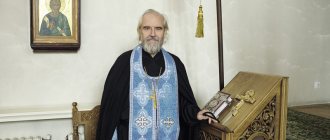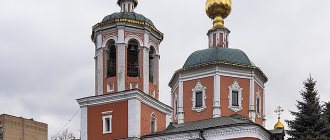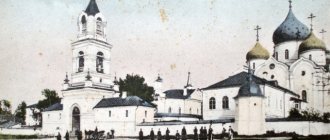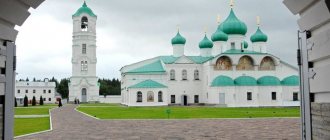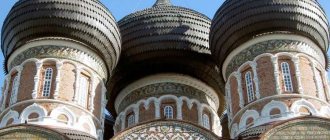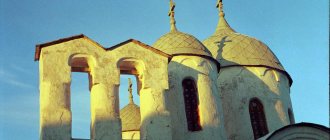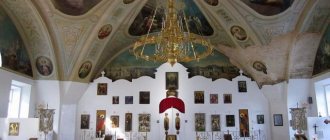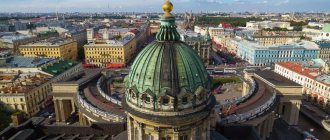Everyone knows the Valaam Spaso-Preobrazhensky Monastery. Unfortunately, not all believers can visit it in order to communicate with its elders.
The fact is that the monastery is located far away, and the rules there are strict. It limits, although does not prohibit, communication between the laity and the inhabitants of the monastery.
In order to satisfy the spiritual thirst of pilgrims and to have representation in the cultural capital of Russia, the monastery operates a monastery courtyard in St. Petersburg.
Monastic farmsteads are opened outside the monasteries
The Charter of the Russian Orthodox Church states that a monastery compound is understood as a community of Orthodox Christians located outside the monastery and under its jurisdiction.
She is administratively subordinate to the same bishop to whom the monastery itself belongs.
If the metochion is located on the territory of another diocese, the name of two bishops is exalted in the church of the metochion. This is the diocesan bishop and the bishop on whose territory the metochion itself is located.
Kazan Church at the courtyard of the Valaam Monastery. Kazan Church is a courtyard of the Valaam Monastery. In addition, the courtyard also includes two chapels and outbuildings
City farmsteads are organized to collect donations for the benefit of the monastery. In addition, pilgrims are also received here.
See also the article Athonite Metochion in Moscow: official website and schedule
In the village, on the farmstead, economic activity is carried out. Its direction is determined by the bishop of the monastery to which the metochion is assigned. In stauropegial monasteries, monastic courtyards are repaired directly to the Patriarch of Moscow and All Rus'.
His Holiness Patriarch of Moscow and All Rus' Kirill. In stauropegial monasteries, monastic courtyards are repaired directly to the Patriarch of Moscow and All Rus'
Typically, a courtyard includes a temple and living quarters. Compound monasteries usually open in the nearest large city.
In addition, monasteries that have great influence in the Orthodox world are also striving to open their representative offices in the capital. Before the revolution, they usually opened in St. Petersburg and Moscow.
The first courtyard of the Valaam Monastery was opened in 1820
The first courtyard of the Valaam Monastery was opened in 1820 in Moscow on Myasnaya Street in Malaya Kolomna. For this purpose, they specially bought a house at the expense of the treasury.
Bishop Vladimir of Revel consecrated the church of St.
4 September
The first courtyard of the Valaam Monastery was consecrated
Sergius and Herman. The utensils for it, as well as the iconostasis, were donated by Emperor Alexander I.
He loved to talk with the abbot and therefore often visited the courtyard.
Moscow courtyard of the Valaam Monastery. 1901 In Moscow, the Valaam Spaso-Preobrazhensky Monastery opened its first courtyard
In St. Petersburg, the Valaam Spaso-Preobrazhensky Monastery owned two farmsteads. Despite its wealth, the monastery was unable to maintain the first courtyard on Myasnaya Street.
The fact is that too much money was spent on this, and the monks did not want to live in the city.
In 1823, an unknown benefactor appeared.
He suggested that the monastery build a chapel on Znamenskaya Square. The offer was rejected, because the monastery owned two farmsteads and chapels in the capital.
Vosstaniya Square (formerly Znamenskaya). Here in 1823 an unknown benefactor suggested that the Valaam Monastery build a chapel
The church standing in the courtyard was transported to Valaam. The metochion chapel was closed in 1832 because it was difficult to support the brethren with fewer than 12 people. Its building was sold to the Imperial Humane Society.
Patronal holidays[edit]
- Icon of the Most Holy Theotokos “Kazan”
- July 21, November 4 - Seraphim of Sarov, reverend
- January 15, August 1 - Nicholas the Wonderworker, Archbishop of Myra, Saint
- May 22, December 19
The patronal feasts of the Valaam Monastery are also solemnly celebrated in the courtyard:
- Transfiguration of the Lord
- August 19 - Icon of the Most Holy Theotokos “Valaam”
– July 14 - Herman and Sergius of Valaam, reverends
- July 11, September 24
The days of remembrance of the saints who shone on Valaam are always celebrated with a polyeleos service.
The courtyard of the Valaam Spaso-Preobrazhensky Monastery in St. Petersburg was not specially built
It should be noted that the courtyard of the Valaam Spaso-Preobrazhensky Monastery was not specially built.
The fact is that the modern courtyard is located in a complex of buildings built for a completely different monastery. This is the Staraya Ladoga Assumption Convent.
Sketch of the project of the Old Ladoga Metochion in St. Petersburg. 1901
The history of the St. Petersburg courtyard of the monastery, located in our time at the intersection of Narvsky and Staro-Peterhofsky avenues, begins in 1901.
It was then that the Assumption Staraya Ladoga Convent acquired a plot of land from Sofia Alexandrovna Kovanko.
1901
this year begins the history of the courtyard of the Valaam Monastery in St. Petersburg
A year later, a wooden chapel was built and consecrated on it in the name of the Dormition of the Mother of God.
The stone church and monastery courtyard began to be designed here a year and a half later.
The construction project was approved by the Sovereign Emperor Nicholas II.
Its author is the famous architect Vasily Antonovich Kosyakov. The construction site was consecrated by Archimandrite Korniliy (Smurov).
Plan of the first floor of the Church of the Kazan Icon of the Mother of God. 1901 In 1905, on the territory of the Staraya Ladoga Metochion, a church was founded in the name of the Kazan Icon of the Mother of God.
On July 10 (23), 1905, a church in the name of the Kazan Icon of the Mother of God was founded on the territory of the courtyard. The Kazan Church became the center of the Kazan Temperance Brotherhood.
It was led by church priests who distributed anti-alcohol literature. In addition, they organized readings on the topic of combating drunkenness.
History[edit]
The courtyard was built in 1904-1910 according to the design of Vasily Kosyakov. This is a complex of buildings that combines a five-domed church in the “Moscow style” with a belfry and a residential building. At the same time, a bell tower with a chapel on the lower floor was built. The complex was built for the Staroladozhsky Dormition Convent of the St. Petersburg diocese, at the intersection of Narvsky and Staro-Peterhofsky avenues, not far from the Obvodny Canal. In the construction of the complex, a combination of light finishing and molding bricks, Radom sandstone and cement was successfully used. In 1910, the main chapel of the temple was consecrated in honor of the Kazan Icon of the Mother of God.
After the revolution, in 1919, the monastery courtyard was liquidated. The Kazan church became a parish church. From August 1922 to February 1923 it belonged to the Petrograd autocephaly, and from 1923 to October 1935 - to the Patriarchal Church. The church was closed on October 7, 1935 and then rebuilt. The closed temple housed a garment factory, then a furniture factory.
During Soviet times in St. Petersburg, monastery farmsteads were closed
With the coming to power of the Bolsheviks in Russia, persecution of the Russian Orthodox Church began in the country.
As part of this, almost all monastery farmsteads in St. Petersburg were closed.
Already starting in 1919, attempts were made to take away office and residential premises from the courtyard of the Assumption Staraya Ladoga Convent.
In 1929, the authorities closed the chapel and icon shop in order to use them for housing.
Trial of the clergy in Petrozavodsk. Photo. 1922 In the first years of Soviet power, the inhabitants of the Staraya Ladoga courtyard were sent into exile in Kazakhstan and Central Asia
The former inhabitants of the compound were subjected to repression. The nuns of the monastery went into exile for three years in Kazakhstan and Central Asia.
Some of the clergy and parishioners of the Kazan Church were shot. The church itself was closed on October 7, 1935.
Its premises were handed over for the organization of an exemplary department store.
October 7, 1935
on this day the church itself was closed
During the years of Soviet power, the premises of the Valaam Monastery courtyard were used as factories.
Further, the cathedral premises were used for various industrial purposes.
A sewing and knitting factory was first located here, and then a furniture factory.
The temple lost all its decoration: ceramics, tiled inserts, colored frieze. Inside, the room was divided into three floors. The entrance arch was blocked.
The bell tower of the Church of the Kazan Mother of God of the Valaam Monastery in St. Petersburg. Photo. Nowadays. The photo shows the entrance arch, laid in the 1920s
Thus, for a long time, the authorities excluded the complex of buildings of the courtyard from the life of the Russian Orthodox Church. This had a bad effect on its safety.
The Soviet government did not strive to preserve the historical appearance of the courtyard. For example, while in the building of the Kazan Church, a large number of unique colored tiles were lost.
Valaam Metochion Valaam Monastery opened in St. Petersburg under Patriarch Alexy II
The Valaam metochion was revived by His Holiness Patriarch Alexy II.
This happened in 1986 - 1990, when His Holiness held the position of Metropolitan of Leningrad and Novgorod.
1986 — 1990
years of revival of the Valaam courtyard
Under him, the Valaam Monastery received the courtyard of the former Staraya Ladoga Monastery under its jurisdiction.
The complex of buildings of the courtyard itself was transferred by the executive committee of the Leningrad City Council to the Leningrad diocesan administration in 1989.
Complex of the courtyard of the Valaam Monastery in St. Petersburg (Staroladoga courtyard). Photo. Nowadays. The compound was returned to the Russian Orthodox Church in 1989
Patriarch of Moscow and All Rus' Alexy II in the same year granted the monastery the status of stauropegial.
In 1990, the metochion left the Leningrad diocese.
2001
this year the courtyard of the Valaam Monastery was recognized as a cultural object of federal significance
In 1990, restoration work began in the premises of the St. Petersburg courtyard. Restorers began to restore the temple.
In addition, repairs began in the monastic cells and abbot's chambers. In 1991, crosses were installed on the domes of the cathedral.
In the same year, the architectural ensemble of the farmstead became an architectural monument.
In 2001, the state recognized the courtyard of the Valaam Transfiguration Monastery as a cultural object of federal significance.
Current state[edit]
Since 1989, the buildings returned to the church have housed the courtyard of the Spaso-Preobrazhensky Valaam Monastery. On April 2, 1994, after restoration work, the Patriarch of All Rus' consecrated the main altar of the church in the name of the Kazan Icon of the Mother of God. The church has side chapels: the southern one in the name of St. Nicholas and the northern one in the name of St. Seraphim of Sarov.
Two chapels are assigned to the St. Petersburg courtyard of the Spaso-Preobrazhensky Valaam Monastery:
- Chapel of the New Martyrs and Confessors of the Russian Church on Narvsky
- Chapel of the Icon of the Mother of God “Joy of All Who Sorrow” on Sinopskaya
Pilgrimage trips to the farmsteads are organized by the pilgrimage service of the monastery “Valaam Pilgrim”
The Valaam Monastery has six farmsteads in Russia. Moreover, four farmsteads are located in St. Petersburg.
In Priozersk, Leningrad region, in Sortoval (Karelia) and Moscow there is one courtyard each.
Home page of the website of the pilgrimage service of the Valaam Monastery “Valaam Pilgrim”
In Moscow, the Temple of St. Sergius and Herman of Valaam Wonderworkers is very popular among pilgrims.
Pilgrimage tours between the farmsteads and the monastery are organized and controlled by the monastery’s pilgrimage service. It is called "Valaam Pilgrim".
Pilgrimage service of the Valaam Monastery
Details about its work can be found on the service’s website.
Activities of the parish[edit]
- Spiritual and educational activities: Spiritual conversations
- General education Orthodox school of Sergius and Herman the Wonderworkers of Valaam on the basis of secondary school No. 288
- Sunday School for Adults
- Children's Sunday School
- Youth club
- Prison Ministry (“Society for the Spiritual Care of Prisoners”)
- Music library of the choir of the St. Petersburg metochion of the Valaam Monastery
The courtyard of the Valaam Monastery on Narvsky Prospekt is the most popular among pilgrims
The St. Petersburg courtyard of the Spaso-Preobrazhensky Valaam Monastery is the most popular among pilgrims.
His address: 190020, St. Petersburg, Narvsky Prospect, 1/29.
The courtyard office is open from Monday to Friday from 10.00 to 18.00. Telephone tel..
The courtyard is located in the historical part of St. Petersburg. At the same time, the transport infrastructure here is well developed: Narvsky Avenue runs nearby.
In this way, pilgrims can reach the ships easily and quickly. To do this, you can use both personal and public transport.
The compound includes 1 temple and 2 chapels
The courtyard includes:
- Temple of the Kazan Icon of the Mother of God. It is open from 8.00 to 20.00.
- Chapel in the name of the New Martyrs and Confessors of Russia at the metochion on Narvsky Prospekt, 1/29.
- Chapel in honor of the icon of the Mother of God “Joy of All Who Sorrow” (in the historical courtyard of the Valaam Monastery on the Sinop embankment). Address: 193167, St. Petersburg, Sinopskaya embankment, 34/36.
- Spiritual Educational Center of the Military Marshal. Demetrius of Thessalonica. The center has a children's Sunday school, catechism courses for adults, an Orthodox youth club and a library.
- NGO "Secondary comprehensive Orthodox school named after St. Sergius and Herman of Valaam wonderworkers." The school operates on the basis of public school No. 288 in the Admiralteysky district at the address: st. Kurlyandskaya, 43, lit. A.
Hegumen Peter (Romanov).
The rector of the metochion of the Valaam Spaso-Preobrazhensky Monastery in St. Petersburg The rector of the metochion is Abbot Peter (Romanov).
At the Valaam courtyard in St. Petersburg, the tradition of the Athonite elders of distributing bread to the needy is maintained.
For this, rye bread is baked according to traditional Valaam recipes.
Metochion of the Spaso-Preobrazhensky Valaam Monastery
It is distributed in the St. Petersburg Nochlezhka on Borovaya Street 112b and in other places.
Where is
Address
Narvsky Prospekt, 29/1
Metro
- Narvskaya
- Baltic
How to get there
- If you are interested in how to get to the courtyard of the Valaam Monastery, then it will be most convenient to do this at the Narvskaya station . The entire journey on foot will take you about 10 minutes. Leaving the metro lobby, turn right, cross Staro-Petergofsky Prospekt and, going around Stachek Square, reach Narvsky Prospekt. Turn right and walk in a straight line all the time. Soon a compound complex will appear on your left.
- From the Narvskaya public transport stop, you can get to the Narvsky Prospekt stop by bus No. 2, 6, 35, 66 or minibus No. 2, 6K, 66, 169, 195 or 306 and walk about 200 meters. From the Stachek Square stop, take tram number 16 to the Narvsky Prospekt stop and walk 180 meters.
- If you arrive at the Baltiyskaya metro station and want to walk to the courtyard, leaving the metro lobby, go straight to the Obvodny Canal embankment, turn left and walk all the way straight to Staro-Petergofsky Prospekt. There, go left again and walk a little more to the courtyard, which will be on your left.
- From the Frunzenskaya metro station about 3 kilometers. You need to go out onto Moskovsky Prospekt, turn left and walk to the Obvodny Canal embankment. Then turn left again and walk along the straight road along the canal to Staro-Peterhofsky Prospekt. There, turn onto the avenue and walk a little more - the courtyard will be on your right. You can also get from the Moskovsky Prospekt stop to Staro-Petergofsky Prospekt by bus No. 65 and walk a little over half a kilometer to the courtyard.
Official site
valaam.spb.ru
Telephone
8-812-902-85-83
8-812-252-77-00
The official website of the metochion contains a schedule of services and other useful information
The Compound owns its own website. The official website is intended to inform believers about his life. In addition, pilgrims can use it to learn information about the spiritual life of the metochion.
The site contains information about the rector of the monastery, its priests, contact information, the history of the monastery, the history of its shrines.
Schedule of services and cycles of clergy at the St. Petersburg metochion of the Valaam Monastery
Separately, it is worth noting that in the Kazan Church of the St. Petersburg metochion of the Valaam Monastery, a daily cycle of divine services is performed.
At the Valaam Metochion in St. Petersburg, a daily cycle of Divine services is held.
On weekdays:
- At 6-00 the midnight office begins, the monastic rule with the three-canon and akathist;
- At 8-00 the 3rd and 6th Hours are read, at 8-20 the Divine Liturgy is served;
- At 17-00 the evening service begins: 9th Hour, Vespers, Matins and 1st Hour.
In accordance with the Liturgical instructions for a particular day, Matins can be supplemented by a polyeleos or Great Doxology. On Mondays, the Liturgy is not celebrated with the exception of Great Feasts and days of remembrance of the polyeleos saints.
On Sundays and holidays, two Divine Liturgies are served: early - at 7-00, late - at 10-00. The hours begin 20 minutes before the start of the Liturgy: at 6-40 and 9-40, respectively.
Video: The choir of the St. Petersburg metochion of the Valaam Monastery performs the troparion to the Kazan Icon of the Blessed Virgin Mary (everyday life).
At the Valaam Metochion in St. Petersburg, services in the Church of the Kazan Icon of the Mother of God are accompanied by a choir.
A detailed schedule of services is located on the metochion’s website. In addition, here you can clarify the features of worship on holidays.
Divine services in the church of the courtyard are accompanied by the singing of the choir of the Valaam courtyard. It is led by Honored Artist of the Republic of Karelia Mikhail Ruzanov.
Shrines[edit]
- An ancient reliquary cross with a particle of the relics of the great martyr and healer Panteleimon
- Reliquary-ark with particles of St. relics: App. Peter and Paul
- St. Basil the Great
- St. Onuphrius the Great
- Mchch. and the wonderworkers Cosmas and Damian
- St. Philaret Metropolitan of Kyiv
- St. Dimitry of Rostov
- Mch. Alexandra Rimlyanina
- St. Isaac, the hermit of Pechersk
- Prpp. Zosima, Savvaty, Herman and Irinarch Solovetsky
- St. Job Pochaevsky
- Blgv. led book Alexander Nevsky
- St. Herman of Alaska
- St. Seraphim of Sarov
- St. Theodore of Sanaksar
- Right Ions of Odessa
- St. Theodosius of the Caucasus
- St. Lavrenty Chernigovsky
- St. Antipas of Valaam
- Valaam ascetic Schemamonk Nicholas
Modern mission of the St. Petersburg metochion of the Valaam Monastery
The modern mission of the courtyard of the Valaam Monastery continues the mission of the farmsteads of ancient Russian monasteries.
Monastic farmsteads began to appear back in the days of Egyptian hermits and ascetics, who used them to sell baskets woven in the desert in cities.
Growing cities demanded the establishment of closer ties between monasteries and them.
Parish life of the courtyard of the Valaam Monastery in St. Petersburg. Photo. 2018
Before the revolution, large cities in Russia had a large number of monastic farmsteads. During Soviet times, almost all of them were closed.
In modern cities, monastic metochions are necessary in order to familiarize city residents with the beauty and completeness of monastic services.
For a monk, serving in a courtyard is a spiritual feat, since here, amid the bustle of the world, he must preserve the purity of his monasticism.
Nowadays, the courtyard of the Valaam Monastery in St. Petersburg is the center of the spiritual life of Valaam pilgrims and monks in the cultural capital of Russia.
Through the courtyard, the economic and economic connection of the monastery with St. Petersburg is ensured. In addition, the monastery’s pilgrimage service operates at its base.
By leaving a comment, you accept the user agreement
How to get to the monastery
You can get to the Valaam Monastery in different ways:
- As a worker, if you want to live on the territory of the monastery for some time and work for the good. To do this, you need to send a corresponding request. Minimum stay 2 weeks. Workers live in specialized hotels, and food is free for them.
- Military service on Valaam. Young people can send their documents to the monastery. A decision will be made to enroll them as monastery workers with a probationary period of 3 months to 3 years. During their stay, military-patriotic classes are conducted with conscripts.
- Volunteer movement. The monastery regularly organizes three-week volunteer work in spring, summer and autumn. More details at volunteer.valaam.ru and ladoga.valaam.ru
- Independent travel. In this case, you can stay at one of the hotels on the island. You can also contact a travel agency to come with an excursion group one day.
- As a pilgrim. To do this, you need to contact the pilgrimage organization for help or send a request to the Valaam pilgrimage service by email or call 8-921-629-3311.
